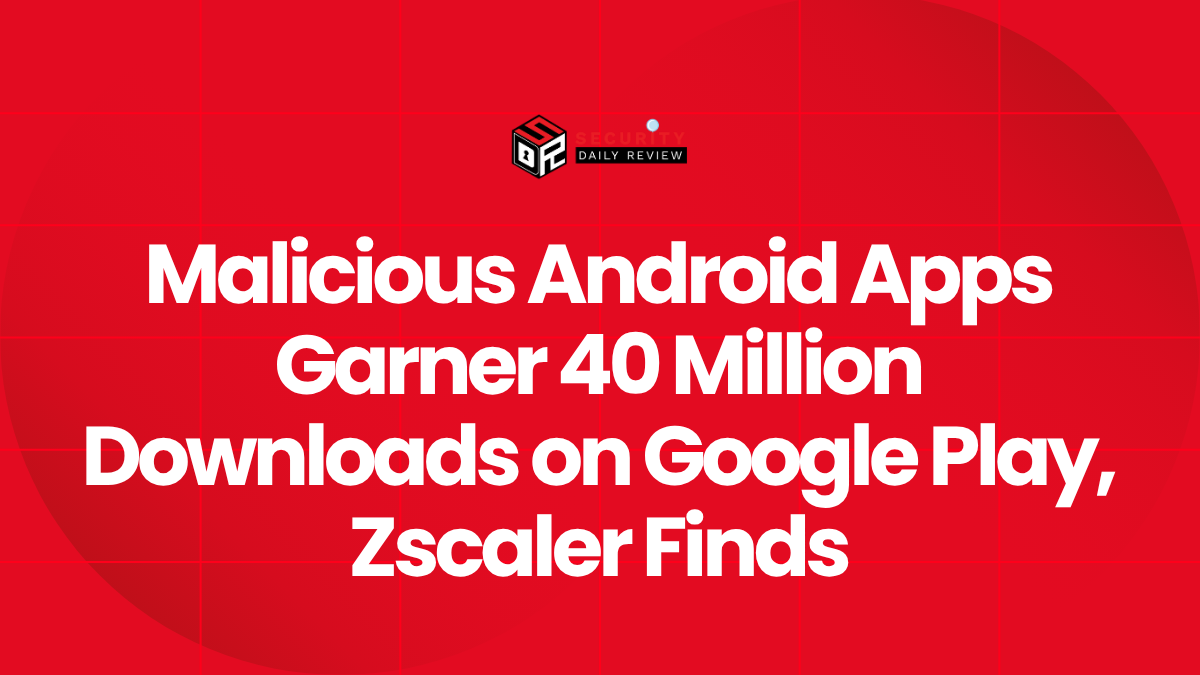For more than a year, cybercriminals have been quietly distributing malicious Android apps via Google Play, amassing over 40 million downloads, according to a threat report released by cloud security provider Zscaler. The apps—embedded with various categories of malware—masqueraded as legitimate utilities such as photo editors, messaging tools, and PDF readers, successfully evading Google’s security checks.
This extensive malware campaign highlights a persistent threat vector affecting the Android ecosystem and shows how attackers continue to exploit mobile platforms using well-crafted social engineering and obfuscation techniques.
Zscaler Research Dissects Large-Scale Android Malware Campaign
Zscaler’s ThreatLabz team examined the behavior of these apps and found they carried a mix of spyware, banking trojans, and ad-fraud malware families. Some of the most prevalent malware identified include Joker, Anatsa, and the ad-fraud variant of Coper.
Malware Families Exploit Play Store Review Mechanisms
According to the report, cybercriminals have evolved their tactics to both deploy and maintain malicious Android apps on the Google Play Store over long periods. The most successful families managed to oscillate between serving legitimate functionality and executing covert malicious operations.
- Joker : Known for SMS theft and subscription fraud. It frequently uses code injection during runtime to evade static analysis.
- Anatsa : A sophisticated banking trojan capable of screen recording and keystroke tracking, targeting banking credentials.
- Coper : Primarily ad-fraud malware using advanced cloaking mechanisms and command-and-control (C2) communications to avoid detection.
The research notes that Zscaler’s threat monitoring infrastructure blocked more than 200,000 infection attempts from apps harboring these malware strains.
Obfuscation and Delayed Activation Allow Malware to Bypass Detection
Researchers highlighted the role of advanced obfuscation techniques in these apps’ longevity on the Play Store. Developers often delayed malicious payload activation until after installation, reducing the likelihood of triggering Google’s automated scanners.
“These apps often include a dual-stage payload mechanism. The initial delivery looks benign, but further stages requested post-installation enable malicious capabilities,” the report details.
These delayed activation strategies allow attackers to abuse trust in the Google Play ecosystem while extending the window in which malicious apps can gather sensitive data or engage in fraud.
Cybercriminal Strategies Include App Cloning and Brand Impersonation
In many instances, threat actors cloned legitimate apps or created lookalike versions that mimicked popular utilities. These clones often used names and icons remarkably similar to trusted applications, helping them avoid user suspicion and earn high download numbers.
Social Engineering and User Trust Fuel App Distribution
User reviews and trending metrics further drove downloads. Some malicious apps actively manipulated reviews through fake ratings or incentivized feedback mechanisms to boost their visibility.
Zscaler emphasizes that cyber hygiene remains essential—especially in BYOD (bring your own device) environments where unmanaged Android devices can become a conduit for lateral movement or sensitive data exfiltration inside enterprise networks.
Google’s Ongoing Struggle to Contain Malicious Apps
While Google continues to rely on machine learning models and manual review processes to detect and remove malicious apps, these defenses are not foolproof. Several malicious apps identified by Zscaler had been live on the Play Store for months before being taken down.
Recommendations for Enterprises and End Users
To mitigate risk from Android malware delivered via official marketplaces, Zscaler suggests several best practices:
- Deploy endpoint detection tools with mobile malware capabilities
- Restrict download permissions on corporate devices to verified applications
- Educate users on spotting unexpected behavior post-installation
- Leverage mobile threat defense solutions that monitor C2 communications and data exfiltration patterns
The firm also noted the importance of improved supply chain validation for app developers and deeper scrutiny of app update behavior—which is often where malware is introduced after an initial “clean” release.
Persistent Mobile Threat Points to Weakening Trust in App Stores
Zscaler’s findings illustrate how cybercriminals are increasingly adept at scaling Android malware campaigns from within trusted platforms like the Google Play Store. As such operations become more refined, enterprises and mobile users alike must treat even official app stores as potential attack surfaces.
With more than 40 million downloads attributed to malicious payloads in just 12 months, the Android malware risk landscape appears to be both persistent and growing. Reducing exposure requires a combination of improved vendor scrutiny, proactive threat detection, and enhanced user education—particularly in hybrid work environments where mobile endpoints are integral to day-to-day operations.









